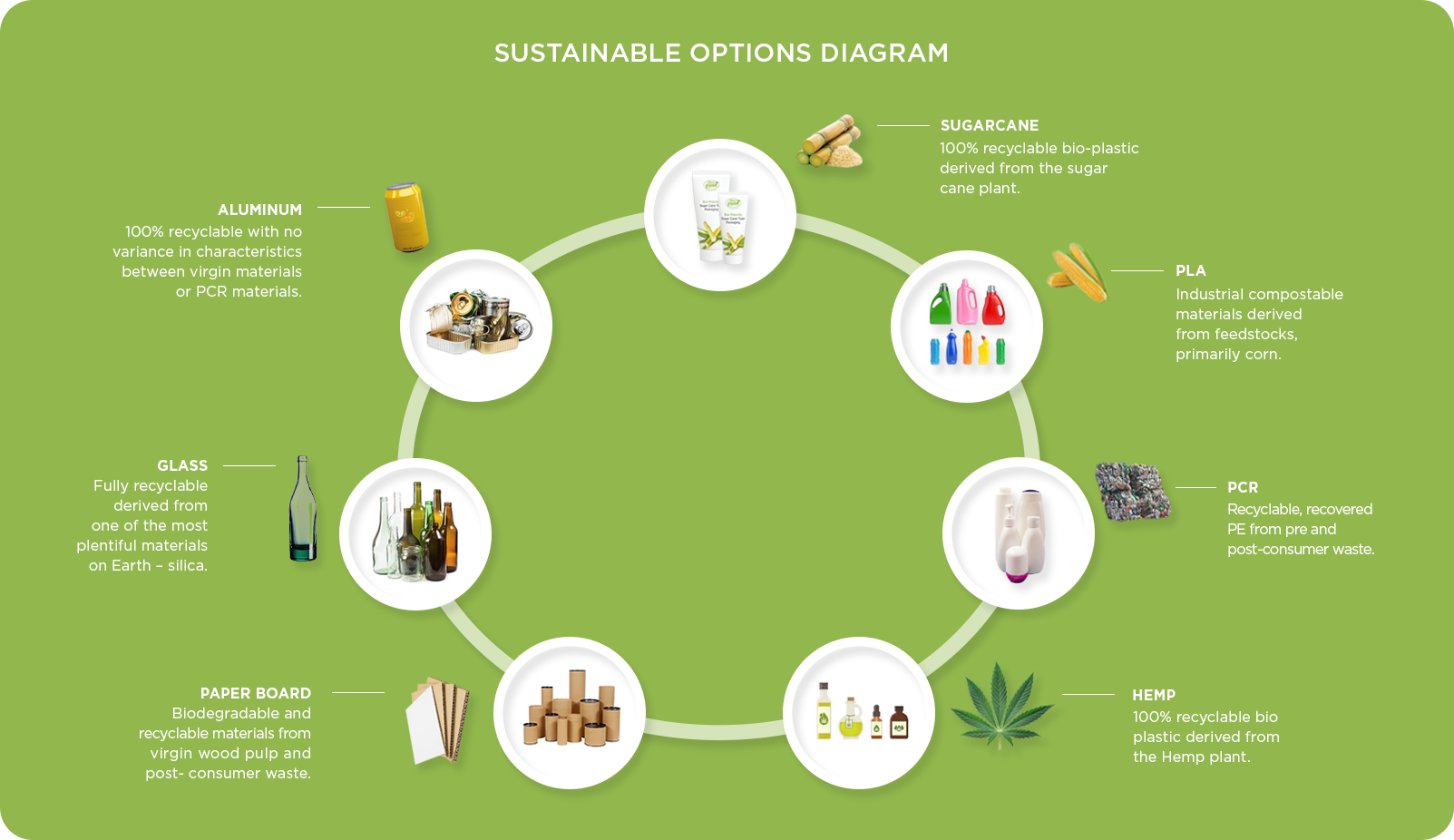Why Sustainable?
Today, companies large and small are taking sustainable packaging seriously and are increasingly considering it as an option.
There is a growing realization that sustainability in packaging isn’t something that brands can side-step. Sooner or later, whether through government regulation, the sheer force of nature or the overwhelming weight of public sentiment, we will need to respond.
For years industry has depended upon PE, polymer-based plastics as the core of their packaging. However, we are seeing stark evidence that between the depletion of non-renewable resources and overwhelming waste disposal issues, the current usage of PE plastics simply is not a sustainable option - companies are looking for better alternatives.
What are my options? How do they measure against my business, market and environmental considerations? What are the best options for my products?

Sustainable Options
Alesia Winters - Express Tubes - Sustainable Advocate
The reality is that the primary goal of packaging isn’t sustainability, it is to protect and preserve your product. That means that before you even think about bio-resins, eco-resins, reduce, reuse or anything else, you need to evaluate the requirements of your product and recommend a material and structure that ensures shelf stability, durability and compatibility.
Presently there are 7 viable options for sustainable packaging materials, each with relative advantages, limitations, and benefits. To make the best decision for your product line, you need to take into consideration the factors that can impact your brand, your market, your business and the environment.
To help in that process, we have compiled a comprehensive listing of the currently available options that exist for sustainable packaging materials.
Choose Green Sustainable Options
| Material | Source | Composition |
|---|---|---|
|
|
Sugarcane pulp |
Sugarcane bioplastics have the same physical and chemical properties as virgin PE and yet is fully recyclable. Sugarcane based PE is one material that can be seamlessly introduced into existing PE manufacturing processes with no impact on processes or existing production equipment of flow. Cellulose: 45% | Hemicellulose: 25% | Lignin: 20% | Petroleum-based Resin: 6% |
|
|
Corn, sugar beet, sugar cane, potato, wheat |
Polylactic acid or polylactide (PLA) is a biodegradable thermoplastic aliphatic polyester polymer that has a variety of applications. The bio-resin used to formulate PLA is sourced from a variety of food-stocks, including corn, sugar beets, sugar cane pulp, potatoes, and wheat. Bio-resin sourced from food-stocks, including corn, sugar beets, sugar cane pulp, potatoes and wheat |
|
|
Post-Consumer Recycle PE |
Post-consumer recycled (PCR) PE resin is the reclaimed form of recycled end-consumer waste, gathered from commercial and residential recycling programs. The most common complaints around PCR resins are occasional black flecks, grey/yellow tinting, and gels in the material. PCR resin from plastics that have been collected in commercial and residential recycling programs. |
|
|
Hemp Pulp |
A highly flexible sustainable option, Hemp can be used to formulate Bioplastic or, the fiber can be used as an alternative to traditional paper board packaging materials. Hemp grows faster and requires less water compared to many other industrial or food stock crops. Bio-resin derived from Micronized Hemp Hurd: 30% | PLA: 70% |
|
|
Wood Pulp |
Wood Pulp comes from second growth, commercial, sustainable forestry practices and is both abundant and in forestry growth, contributes to CO2 absorption rates that reduce the impact of greenhouse gas impact on the environment. Wood Pulp derived from second growth, commercial sustainable forestry practices |
|
|
Silica |
Glass is primarily derived from one of the most abundant resources on the planet, sand. And as one of the more recognizable of the renewable materials, it can be recycled endlessly without loss of quality or purity. However, while sand, or silica, is the main ingredient in glass, it is not the only mineral that makes up glass. Silica: 70% | Sodium Oxide: 18% | Magnesium Oxide | Lime: 12% Calcium Carbonate |
|
|
Alumin - Bauzite Ore |
Aluminum is considered the most plentiful metal on the planet, but it is not found free in nature. Although common and widespread it is produced from the ore bauxite through smelting process. Aluminum can easily be recycled, re-smelted and reformed with little or no loss of quality, strength, or appearance. Magnesium: 1% | Manganese: 1% | Iron: 0.4% | Silicon: 0.2% | Copper: 0.15% |